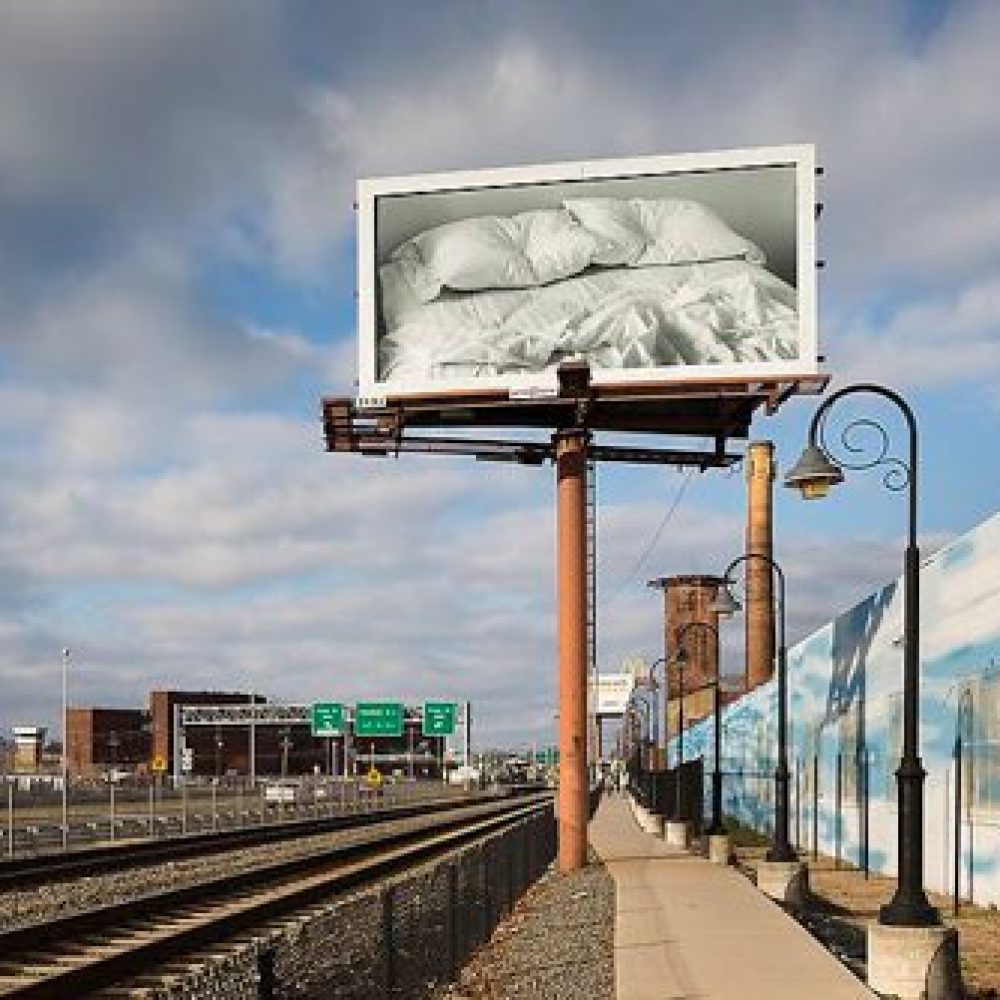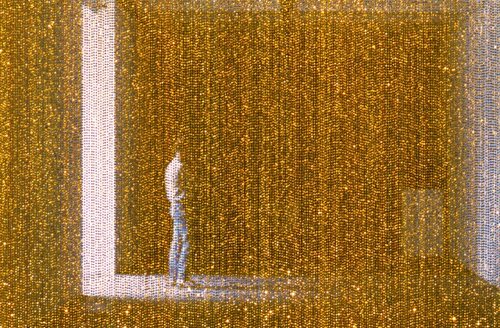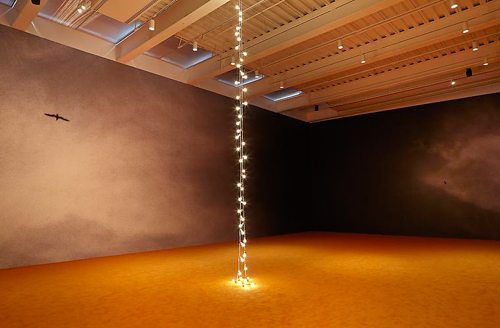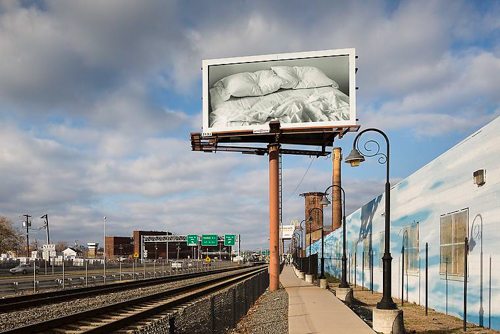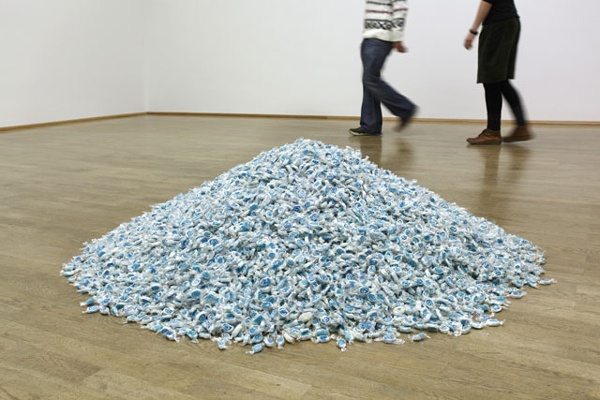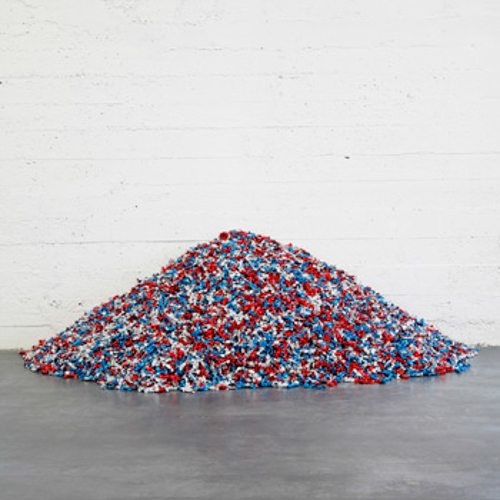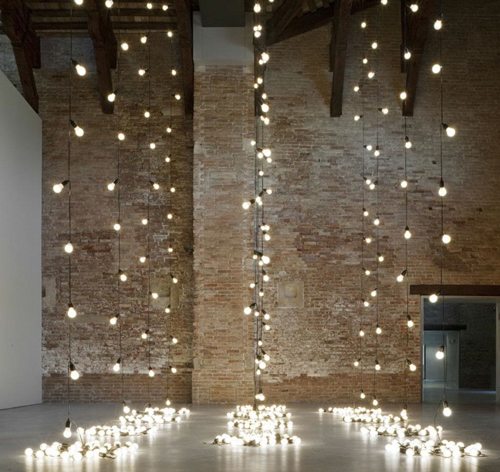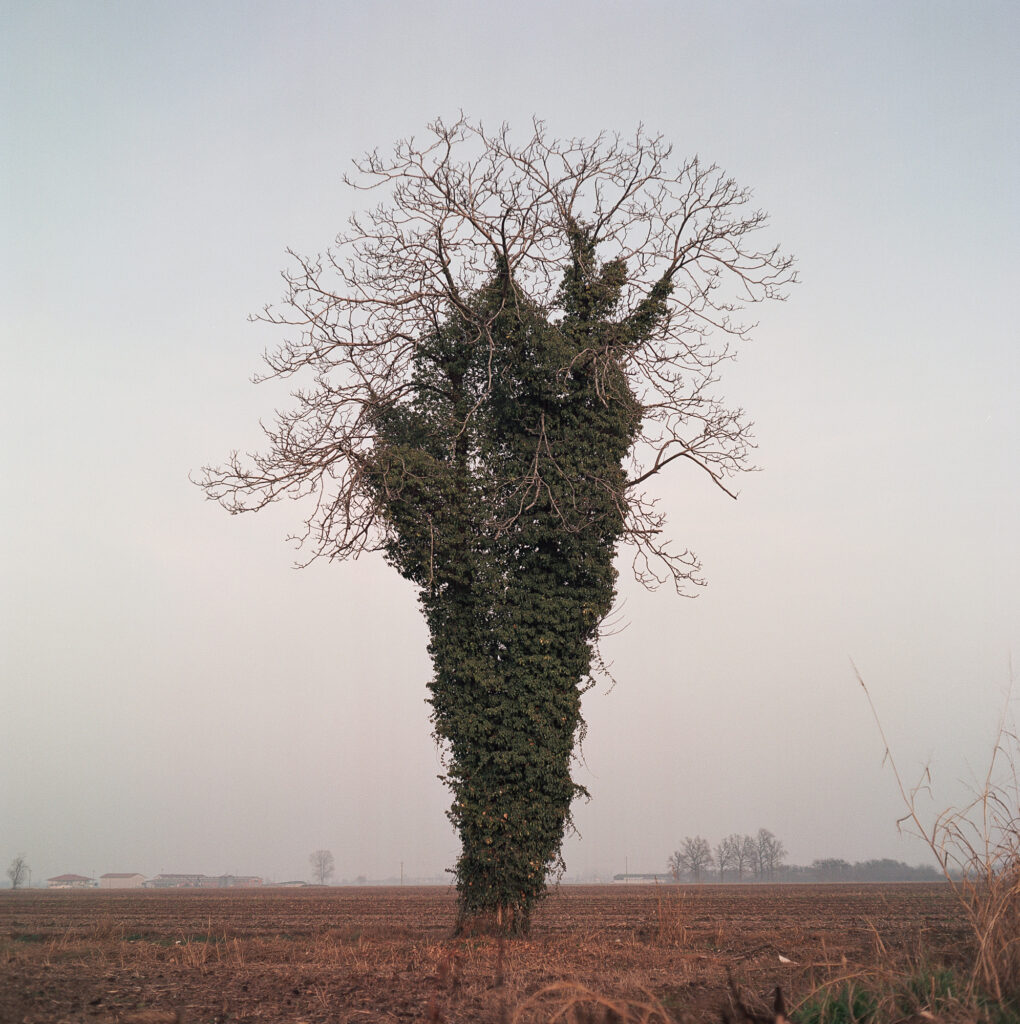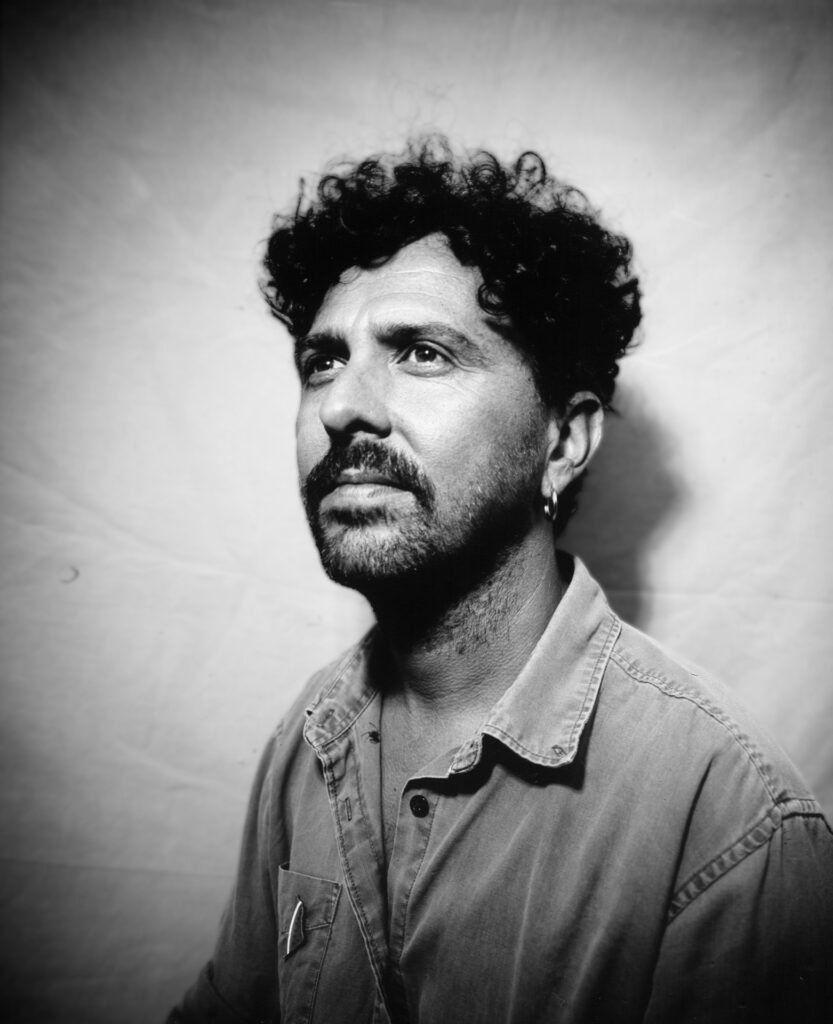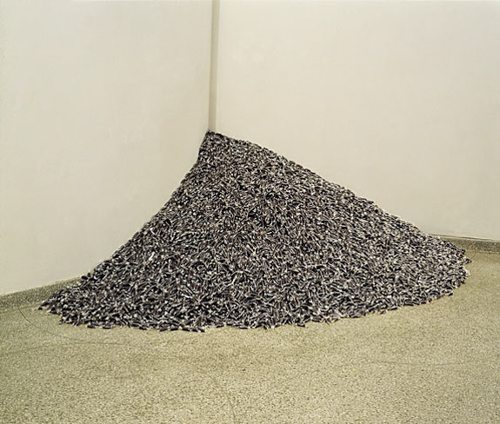
Aunque la mayoría de la gente no pensaría que Frankfurt am Main es una ciudad que ofrece una amplia vida cultural, es en realidad un sorprendentemente gran centro de arte.
Although most people would not necessarily think of Frankfurt am Main as a city offering an extensive cultural life, it is actually a surprisingly great hub of art.
Por un lado se puede estudiar en una academia de bellas artes conocida como el Städelschule, o se puede tomar unas clases de dibujo de noche en Abendschule der Städelschule, situado en la periferia de la ciudad, en un lugar parecido a una fábrica abandonada, al cual solía ir en las tardes de principios de verano con brisa, que parecían rezumar con una sensación de intemporalidad y una mezcla proustiana de pasado y presente.
On one hand you can study at a well-known fine arts academy, such as the Städelschule, or you can take an evening class in drawing at the Abendschule der Städelschule, located in the suburbs in a seemingly derelict factory site, which I used to visit on breezy early summer evenings, that seemed to ooze with a sense of timelessness and a Proustian mixture of past and present.
Por otro lado, la ciudad se enorgullece de tener un sinfín de galerías y museos, de las cuales, personalmente, el Museum für Moderne Kunst fue uno de mis favoritos por sus fantásticas exposiciones temporales, como la de Félix González-Torres: Objetos específicos sin forma específica (2011) – una exposición de obras minimalistas de arreglos y diseños sencillos – que me persigue hasta hoy.
On the other hand, the city takes prides in having an endless number of galleries and museums, of which the Museum für Moderne Kunst was one of my personal favourites for its fantastic temporary exhibitions, such as Felix Gonzalez-Torres: Specific Objects without Specific Form – an exhibition of minimalist works of simple arrangements and layouts – that haunts me to this day.
Aunque nació en Cuba, Félix González-Torres se crió en España y en Puerto Rico, donde estudió arte en la Universidad de Puerto Rico, después se fue a la ciudad de Nueva York con una beca de estudio, donde se estableció también. Al igual que sus contemporáneos en la década de 1980, González-Torres trató de cuestionar la idea modernista de la creación de arte única mediante el uso de ready-mades (arte encontrado) en sus composiciones. En 1983, obtuvo la recibió licenciatura de BB. AA (con especialidad en fotografía) y en 1987 una maestría del Centro Internacional de Fotografía.
Though born in Cuba, Felix Gonzalez-Torres was brought up in Spain and in Puerto Rico where he studied art at the University of Puerto Rico, later he went to New York City on a study fellowship, where he settled. Like his contemporaries in the 1980s, Gonzalez-Torres sought to challenge the modernist idea of the creation of unique art by using ready-mades in his compositions. In 1983, he received a Bachelor in Fine Arts in Photography and in 1987 a Master’s from the International Centre of Photography.
Junto a sus estudios, González-Torres llevó una vida artística activa, que incorporaba la crítica socio-política y examinaba las cuestiones respeto a la democracia, el consumismo y la privacidad. De todas las obras en las que muestra tendencias más críticas e incisivas, las que tratan la homosexualidad y la privacidad, son probablemente las que más destacan.
Alongside his studies, Gonzalez-Torres led an active artistic life, which incorporated socio-political criticism examining issues concerning democracy, consumerism and privacy. Of all his works with critical leanings, those touching on homosexuality and questions of privacy are probably what distinguished him.
La obra Sin título (Billboard) 1991 es una fotografía en blanco y negro de una cama que todavía lleva las huellas de las dos últimas personas que durmieron allí, de la que uno infiere, había dos hombres: el propio artista y su amante. Al yuxtaponer la intimidad del dormitorio con la idea del consumismo intrusivo o intimidante político de la cartelera inherente al título el artista cuestiona los límites entre las esferas públicas y privadas y se enfrenta al espectador con la esencia de cualquier relación, aunque en el caso de dicha obra se destaca la relación entre personas homosexuales.
The work Untitled (Billboard) 1991 a monochrome photograph of a bed that still bears the imprints of the last two people to sleep there, who one infers, were two men: the artist himself and his lover. By juxtaposing the intimacy of the bedroom with the idea of the intrusive consumerism or political hectoring of the billboard inherent in the title, he questions the boundary between the private and public spheres and confronts the viewer with the essence of any relationship even as the difference of same sex relationships is underlined.
La homosexualidad en los años 90 era un tema controvertido, que ya no podía ser ignorado debido a la crisis del SIDA que afectó a la comunidad gay (en gran parte masculina). La imagen aparentemente pacífica de una cama vacía, no alude sólo a las personas que lo podrían haber ocupado, pero también implica la relación entre ellos como uno de amor y cuidado. Sin embargo, es imposible pasar por alto el hecho de que el compañero de González-Torres, Ross Laycock, acababa de morir de SIDA poco antes de tomar la fotografía. Así, el artista coloca material personal y biográfico en la esfera pública, la divulgación de la pérdida que había sufrido la hace de una manera elegante, ya que es una mera alusión a la soledad y a la muerte, en lugar de forzar solamente una lectura en el espectador.
Homosexuality in the 90s was a controversial issue, but one that could no longer be ignored owing to the AIDS crisis affecting the (largely male) gay community. The seemingly peaceful image of an empty bed hints not only at the people who might have occupied it, but also implies the relationship between them as being one of love and care. However, it is impossible to disregard the fact that Gonzalez-Torres’ partner, Ross Laycock, had just died of AIDS before the photograph was taken. The artist thus places personal and biographical material in the public realm, disclosing the loss he had suffered in a most elegant way that merely hints at loneliness and death, rather than forcing such a reading on the viewer.
La obra Sin título (Amantes perfectos) 1991 comprende dos relojes contando al mismo tiempo, de un tipo que normalmente se encuentra en las oficinas o espacios públicos. La obra puede ser interpretada como una imagen de los amantes que viven juntos y «hacen tictac» juntos, pero esta idea romántica de la vida se ve atenuado por el conocimiento de que uno de los relojes puede parar antes del otro – que es lo que pasó con el propio artista cuando perdió su pareja.
The work Untitled (Perfect Lovers) 1991 comprises two clocks telling the same time, of a type typically found in offices or public spaces. The work can be interpreted as an image of lovers who live together and “tick” together, but this romanticized idea of life is tempered by the knowledge that one clock may stop before the other – which is what happened to the artist himself when he lost his partner.
La idea de muerte siempre me recuerda a la obra de Damian Hirst La imposibilidad física de la muerte en la mente de alguien vivo. No es la imagen del tiburón sumergido en formaldehído lo que me fascina continuamente; sino es el título que capturó mi imaginación: simple, garra y cruel.
Death always reminds me of Damian Hirst’s work The Physical Impossibility of Death in the Mind of Someone Living. It is not the image of the shark immersed in formaldehyde, which continually fascinates me; it’s the title that captured my imagination: simple, punchy and cruel.
La vida tiene muchos retos, pero probablemente el más grande que nosotros, como seres humanos sintientes tenemos que enfrentar es hacer frente a la idea de la muerte y ver a un ser querido morir. Como el título elegido cuidadosamente de la obra por Damien Hirst también refleja, la muerte no puede ser desmitificada, debido a la imposibilidad de experimentarla y luego volver a la vida.
Life has many challenges, but probably the greatest that we as sentient human beings have to face is to cope with the idea of death and seeing a loved one die. As the carefully chosen title of Damien Hirst’s work also reflects, death cannot be demystified, because of the impossibility of experiencing it and later returning to life.
La obra Sin título (Loverboys) 1991 es una instalación que cuenta con una pila de caramelos, que se puede parecer como una representación de la relación entre Ross y el artista, ya que es el peso ideal combinado de los dos. La obra se hizo cuando Ross estaba muriendo de SIDA y había llegado a ser muy delgado por lo que el trabajo puede ser considerado como un recuerdo de los tiempos que eran felices y los dos tenían un peso ideal. Es una obra emocional, porque se anima a los espectadores a tomar uno de los caramelos, así restando de la obra y consumiendo de sus partes, es inevitable reducir el peso de la pila simbolizando así la lenta muerte de los dos.
The work Untitled (Loverboys) 1991 is an installation, a pile of sweets, or candies, that may be seen as a representation of the partnership of Ross and the artist, since it is the combined ideal weight of Gonzalez-Torres and Ross. The work was made when Ross was dying of AIDS and had become very thin, thus the work can be considered as a remembrance of the times they were happy. It is an emotional piece because the viewers are encouraged to help themselves to the candies, and by subtracting from the piece and consuming its parts, they inevitably reduce the weight of the pile symbolizing thus the slow death of the two.
La obra Sin título (Garganta) 1991 es una ofrenda simbólica a su padre. Hizo la obra el año cuando murió su padre y se compone de caramelos para la tos con sabor de gota de miel apilados en el pañuelo de su padre. Es el más pequeño y posiblemente más oscuro pila de caramelos. El artista no estaba interesado en la creación de grandes monumentos; recurrió a formas sencillas de expresar sentimientos profundos y una sensación de pérdida.
The work Untitled (Throat) 1991 is a symbolic offering to his father. The work was made the year his father died and comprises honey-flavoured cough-drop candies piled on his father’s handkerchief. It is the smallest and possibly most obscure candy pile work. The artist was not interested in the creation of great monuments; he resorted to simple ways of expressing deep feelings and a sense of loss.
Las pilas de papel son tan famosas como sus pilas de dulces, aunque la interacción con ellos es necesariamente menos extrema ya que los elementos no se pueden consumir; pueden, sin embargo, ser llevados a casa y expuestos en el propio santuario privado de uno. Así, el arte con mayúsculas A se difunde y como cada pieza se regala, el arte se democratiza. El artista intentó deconstruir la idea de una obra de arte como un objeto comercial, cuyo valor monetario, es decir, el costo, limita el acceso a un grupo privilegiado; por lo tanto, se volvió a materiales de uso cotidiano, como papel, dulces, goma y bombillas para universalizar su arte. Con estos simples objetos, trató con éxito los problemas socio-políticos de su día de una manera sutil y sin confrontación.
Gonzalez-Torres’ paper stacks are just as famous as his candy piles, though interaction with them is necessarily less extreme since the elements cannot be consumed; they can, however, be taken home and exhibited in one’s own private sanctuary. Thus, art with a capital A is disseminated and as each piece is given away, the Art is democratized. The artist sought to deconstruct the idea of a work of art as a commercial object whose monetary value, i.e. cost, limits access to a privileged group; therefore, he turned to everyday materials such as paper, candies, rubber and lightbulbs to commoditise his art. With these simple objects, he successfully addressed socio-political issues of his day in a subtle and non-confrontational way.
La obra Sin título (EE.UU. hoy) 1990 revela los sentimientos que tenía por su país de adopción; es brillante y colorido, los dulces están envueltos en rojo, azul y plata que, junto con el dulce sabor de caramelo, crean una sensación de felicidad y satisfacción pero dado el tamaño de la pila contra una esquina la obra también ofrece una lectura alternativa que es la crítica del consumismo.
The piece Untitled (USA today) 1990 reveals the feelings he had for his adopted homeland; it is bright and colourful, the candies are wrapped in red, blue and silver which, together with the sweet taste of candy, create a sense of happiness and contentment but given the size of the pile against a corner the work also offers an alternative reading which is criticism of consumerism.
González-Torres también creó varias obras de luz de cuerda, compuesto por bombillas de bajo voltaje ensartadas que deben ser dispuestas de manera libremente elegidos por los conservadores para añadir a las interpretaciones de las ideas del artista y la democratización de la obra.
Gonzalez-Torres also created various light-string pieces, consisting of low wattage lightbulbs strung together which are to be arranged in ways freely chosen by curators to add to the interpretations of his ideas and the democratization of the work.
No importa qué material se utiliza, sus obras poseen un carácter efímero. El escultor británico Henry Moore creyó que sus esculturas necesitan ser tocadas y ser sentidas para ser apreciadas; de la misma manera, Gonzales Torres creyó que el proceso del arte no terminó con la mera instalación de esta, sino que continuó a través de la interacción constante: a través del consumo o la eliminación por los visitantes y la reposición de los materiales por el museo. Aunque su arte es conceptual y, por lo tanto, un poco menos accesible al público, su trabajo se puede apreciar en muchos niveles, y cuando uno se toma el tiempo para pensarlo, su profundidad y sencillez casi budista de la percepción se manifiesta, y esto es lo que ha permitido resistir el paso del tiempo.
No matter what material he used, his works possess an ephemeral nature. The British sculptor Henry Moore believed that his sculptures needed to be touched and felt to be appreciated; in the same way, Gonzales Torres believed that the process of art did not end with the mere setting up of an installation, it continued through constant interaction: through consumption or removal by visitors and the replenishment of materials by the museum. Although it is conceptual and therefore slightly less accessible to the public, his work can be appreciated at many levels, and when one takes the time to think about it, its depth and almost Buddhist simplicity of perception shines through, and it is this which has allowed it to stand the test of time.
El propio González-Torres murió de complicaciones relacionadas con el sida en 1996, a la edad de 38 años, pero su obra sigue viva en 2007, fue elegido para representar a título póstumo el EE.UU. en la Bienal de Venecia y sigue inspirando artistas hasta el día de hoy.
Gonzalez-Torres himself died of AIDS-related complications in 1996, at the age of 38, but his work lives on; in 2007, he was posthumously chosen to represent the USA at the Venice Biennale and he continues to inspire artist to this day.

